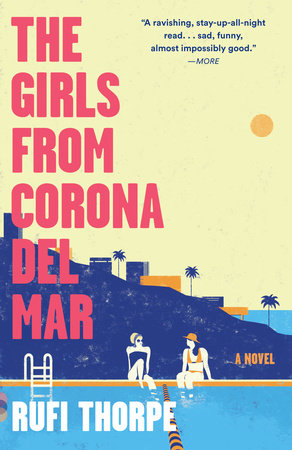The Girls from Corona del Mar Reader’s Guide
By Rufi Thorpe


1. The Girls from Corona del Mar opens with a scene in which Mia asks Lorrie Ann to break her toe. How does this scene echo throughout the novel? Can this scene, and other scenes in which feet and toes appear, be read symbolically?
2. How does Mia characterize herself in her youth? How does she characterize Lorrie Ann? Which aspects of their personalities remain the same over the course of the novel? What are some notable changes?
3. Discuss how Mia defines motherhood throughout the novel. How do Mia’s interactions with her own mother affect her understanding of what it means to be a mother? Why do you think Mia is so hesitant to become a mother?
4. Discuss the scene in which Mia hits her brother with a hanger. Did it change your perception of Mia?
5. What is the significance of the anecdote that opens the chapter “Dead Like Dead-Dead,” in which Mia’s dog gets hit by a car? Discuss the phone call that Mia makes to Lorrie Ann afterward. How does this incident change the dynamics of their relationship? Why do you think the author choose to juxtapose the death of Mia’s dog with the death of Jim?
6. Mia and Lorrie Ann’s friendship is rooted in the common experiences of youth, but their lives take completely different paths after high school. Why do you think Mia holds on to the friendship? Is it because of nostalgia? Familiarity? Loyalty? Discuss the moments in which Mia doubts the validity of their friendship. By the end of the novel, how has she come to view their relationship?
7. Lorrie Ann’s romantic relationships are sometimes judged harshly by Mia. Discuss Mia’s first meeting with Arman. What are her impressions of him? How do her assumptions about him change? By the end of the novel, does Mia see Arman in a different light?
8. Consider Mia’s upbringing in Corona del Mar and her surprise when she is admitted into Yale. What value does she place on education, and why? Why do you think Mia chose to study classics? How do her studies shape her worldview?
9. How does Mia describe her relationship with Franklin? Why do you think she is so hesitant about commitment in their relationship? How do her feelings about the topic shift after Lorrie Ann’s visit?
10. Mia says that her father “never felt like family.” How does the absence of her father affect her? Discuss the scene in which Mia, Franklin, and her father meet. After Franklin defuses the tense conversation between Mia and her father, how does Mia’s perception of her father change?
11. Discuss the significance of the tea set that Mia purchases at the beginning of the novel. What does her contentious relationship with Bensu symbolize? When Mia discovers the where the tea set has ended up at the end of the novel, how does she react?
12. How does Mia’s anxiety about financial stability manifest throughout the novel? Discuss how wealth and poverty are explored by the author. How does Mia’s relationship with Franklin change these concerns?
13. Mia states that “I feared the Inanna in myself.” How does the mythology of Innana factor in The Girls of Corona del Mar? How does Mia use the story of Innana to explore her feelings about motherhood? Parental relationships? Lorrie Ann’s behavior?
14. Discuss the emails that Mia sends to Lorrie Ann after Lorrie Ann leaves Istanbul. Why do you think she sent those notes?
15. Mia mentions that “the Corona del Mar in which Lorrie Ann and I grew up actually ceased to exist almost at the exact moment we left it.” What is the significance of this statement? Does she mean that the town physically changes or that her connection to the town has changed over time? Or both?
Just for joining you’ll get personalized recommendations on your dashboard daily and features only for members.
Find Out More Join Now Sign In